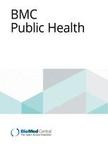版权所有:内蒙古大学图书馆 技术提供:维普资讯• 智图
内蒙古自治区呼和浩特市赛罕区大学西街235号 邮编: 010021

作者机构:Dept Family Med & Populat Hlth Antwerp Belgium Univ Antwerp Ctr Hlth Econ Res & Modelling Infect Dis Antwerp Belgium Hasselt Univ Data Sci Inst Hasselt Belgium Univ Namur Namur Inst Complex Syst naXys Namur Belgium Univ Namur Dept Math Namur Belgium Vrije Univ Brussel Artificial Intelligence Lab Brussels Belgium Univ Leuven Rega Inst Med Res Clin & Epidemiol Virol Leuven Belgium Sciensano Dept Epidemiol & Publ Hlth Brussels Belgium Univ Hosp Leuven Natl Reference Ctr Resp Pathogens Leuven Belgium Univ Leuven Dept Microbiol Immunol & Transplantat Leuven Belgium Univ Leuven Lab Socioecol & Social Evolut Leuven Belgium Univ New South Wales Sch Publ Hlth & Community Med Sydney NSW Australia
出 版 物:《BMC PUBLIC HEALTH》 (BMC公共健康)
年 卷 期:2024年第24卷第1期
页 面:1171页
核心收录:
学科分类:1004[医学-公共卫生与预防医学(可授医学、理学学位)] 10[医学]
基 金:Research Foundation Flanders (FWO) [1234620N, 1242021N, G0G2920N, G059423N] Research council of the Vrije Universiteit Brussel (OZR-VUB) [OZR3863BOF] European Union's Horizon 2020 research and innovation programme (NF, PC and NH, European Research Council (ERC)) [682540-TransMID, 101003688-EpiPose] ESCAPE project European Union Antwerp Study Centre for Infectious Diseases Flemish Government through the AI Research Program - FWO Flemish Government
主 题:COVID-19 Model QALY Vaccine Non-pharmaceutical intervention SARS-CoV-2
摘 要:Background When formulating and evaluating COVID-19 vaccination strategies, an emphasis has been placed on preventing severe disease that overburdens healthcare systems and leads to mortality. However, more conventional outcomes such as quality-adjusted life years (QALYs) and inequality indicators are warranted as additional information for policymakers. Methods We adopted a mathematical transmission model to describe the infectious disease dynamics of SARS-COV-2, including disease mortality and morbidity, and to evaluate (non)pharmaceutical interventions. Therefore, we considered temporal immunity levels, together with the distinct transmissibility of variants of concern (VOCs) and their corresponding vaccine effectiveness. We included both general and age-specific characteristics related to SARS-CoV-2 vaccination. Our scenario study is informed by data from Belgium, focusing on the period from August 2021 until February 2022, when vaccination for children aged 5-11 years was initially not yet licensed and first booster doses were administered to adults. More specifically, we investigated the potential impact of an earlier vaccination programme for children and increased or reduced historical adult booster dose uptake. Results Through simulations, we demonstrate that increasing vaccine uptake in children aged 5-11 years in August-September 2021 could have led to reduced disease incidence and ICU occupancy, which was an essential indicator for implementing non-pharmaceutical interventions and maintaining healthcare system functionality. However, an enhanced booster dose regimen for adults from November 2021 onward could have resulted in more substantial cumulative QALY gains, particularly through the prevention of elevated levels of infection and disease incidence associated with the emergence of Omicron VOC. In both scenarios, the need for non-pharmaceutical interventions could have decreased, potentially boosting economic activity and mental well-being. Conclusion